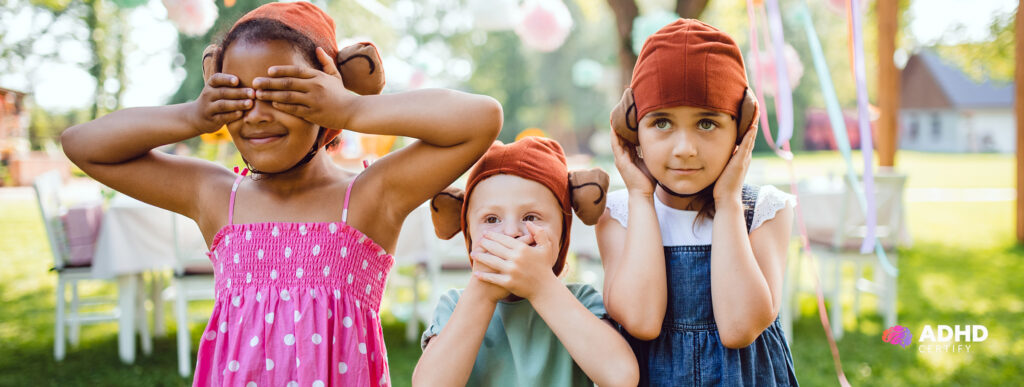Ever wondered why the first week of summer holidays with your ADHD child feels like juggling fireworks, joyful one minute, overwhelming the next?
You’re not imagining it.
Without school’s built-in structure, many children with ADHD experience a spike in restlessness, emotional ups and downs, and difficulty focusing even during fun activities.
And you’re not alone.
According to guidance from the NHS-(Great Ormond Street Hospital), children with ADHD often benefit from consistent routines and clear boundaries, which can become blurred during school breaks. The shift from predictable term-time schedules to wide-open summer days can feel exciting but also dysregulating.
The good news?
With the right mix of structure, sensory-friendly ideas, and freedom to move, summer can actually bring out your child’s strengths.
This guide offers practical, ADHD-informed activities to help your family enjoy the season without the burnout. Whether you’re looking for ways to burn off energy, keep minds engaged, or just get through the day with fewer meltdowns, you’re in the right place.
Why Summer Can Be Challenging (and Rewarding) for Kids with ADHD
While summer can disrupt routine and focus, it also opens the door to ADHD-friendly opportunities for creativity, movement, and flexible structure.
Lack of structure and boredom can trigger restlessness
Without the usual school routine, many children with ADHD feel unmoored.
What looks like freedom on paper often leads to boredom, irritability, and emotional overload. Predictability gives ADHD brains a sense of safety, without it, restlessness quickly creeps in.
For some children, ADHD doesn’t exist in isolation.
It may co-occur with learning disabilities that affect memory, processing, or language, making unstructured time even harder to manage. Add in quotes:
“This guide explains how ADHD and learning disabilities often overlap, and what kind of support can make a difference.”
Boredom isn’t laziness, it’s often the brain’s way of signalling that it needs stimulation. Having structure during summer, even just a basic rhythm to the day, can make all the difference.
Opportunities for creativity, movement, and confidence-building
Summer can also unlock what children with ADHD need most: space to move, explore, and play without pressure. Activities like den-building, cycling, or messy art projects allow them to channel energy in ways that boost self-esteem.
These moments; ungraded, unjudged, and unforced, can build confidence. When children are free to follow their interests, their natural creativity shines through.
This is where ADHD becomes a strength, not a struggle.
The importance of routine and flexibility in summer planning
Rigid timetables rarely work but no structure at all can backfire. Children with ADHD often thrive on loose routines: visual schedules, daily anchors, or simple rhythms like “park in the morning, quiet time after lunch.”
The goal isn’t control, it’s predictability.
Knowing what’s coming next helps reduce anxiety and meltdowns. And with a flexible routine, there’s room for spontaneity without losing the sense of safety that structure brings.
Outdoor Activities That Burn Energy and Build Focus
These outdoor ADHD activities for kids are designed to channel excess energy while building focus and confidence in natural, movement-rich settings.
Nature walks, bug hunts, and sensory scavenger hunts
Turn your next walk into a mini adventure.
Nature trails, bug spotting, or collecting textured items like leaves and stones can calm the nervous system and keep curious minds engaged. These ADHD summer activities that kids tend to enjoy are low-cost, calming, and full of sensory input.
Obstacle courses and backyard adventures
Create simple obstacle courses using cushions, cones, or garden toys. They’re great for motor planning and offer satisfying physical challenge. Add a timer or team mode to build problem-solving and cooperation.
Cycling, scootering, or trampolining with set goals
Repetitive movement helps regulate energy and mood. Whether it’s laps on a bike, time on a scooter, or a bounce-count on the trampoline, these activities for kids with ADHD turn movement into meaningful focus.
Indoor Activities That Stimulate the Mind
Hands-on activities for kids with ADHD support creativity, focus, and flexible thinking, perfect for rainy days or quiet time.
Arts and crafts that allow for open-ended creativity
Paint, clay, and collage aren’t just creative, they’re soothing. Open-ended art lets children express big feelings without pressure.
Give loose instructions and let their imagination lead.
Building with LEGO, puzzles, or STEM kits
Construction play builds patience, spatial awareness, and focus. From puzzle-solving to snapping LEGO bricks into place, these structured tasks feel fun, but feed executive function.
Cooking or baking with step-by-step visual guides
Cooking blends sensory input, sequencing, and autonomy. Recipes with visual instructions support kids who need clarity. It’s also a great chance to bond, taste, and learn life skills.
Bonus tip: These can be adapted into fun summer ADHD ideas by theming activities around a topic your child loves, like animals, space, or favourite characters.
Group and Social Activities for Connection
These social ADHD-friendly summer routines help children build connection, communication skills, and self-esteem, at their own pace.
ADHD-friendly summer camps (UK-based)
Look for programmes that offer small group sizes, clear structure, and staff trained in neurodivergent needs. The summer activities ADHD families value most are those that offer fun and structure, without overwhelming the senses..
Small playdates with structured games
Unstructured social time can be tricky. Keep things predictable with short playdates and games that have clear rules, like LEGO challenges, scavenger hunts, or turn-taking board games.
Joining local clubs with ADHD-aware staff
Check your area for clubs in sports, arts, or hobbies with inclusive policies. Staff with ADHD awareness create environments where neurodivergent children feel seen, heard, and able to thrive in group settings.
Calming and Mindful Activities for Regulation
These ADHD-friendly summer routines support emotional regulation through calming, sensory-rich experiences that help balance stimulation and rest.
Yoga, breathing games, and movement breaks
Short yoga stretches, animal poses, or playful breathing games like “smell the flower, blow out the candle” help reset busy minds. These tools can be built into daily ADHD summer activities on which kids rely on to stay grounded.
Water play, bubble art, or quiet sensory corners
Pouring, splashing, or watching bubbles float can soothe overloaded senses. Many children with ADHD benefit from calming sensory experiences, especially when they’re feeling overstimulated or dysregulated.
For children with overlapping sensory needs, such as those who are also autistic, creating a sensory-friendly environment at home can be essential.
Music, drumming, or audiobook sessions
Rhythmic beats, calming playlists, or immersive audiobooks offer a break from visual overload. Music-based fun summer ADHD ideas can be both energising and deeply relaxing, depending on what your child needs in the moment.
Tips for Parents to Make the Most of Summer
These practical, ADHD-friendly summer routines help create smoother days, fewer meltdowns, and more moments of connection.
Use visual schedules and timers to support transitions
Children with ADHD often struggle with sudden changes. Visual schedules, countdown timers, or picture-based planners can ease transitions and reduce anxiety. Simple tools like a magnetic daily chart or a “first–then” board can make the day feel more predictable.
Balance stimulation with downtime
Too much activity can lead to burnout but so can too little. Alternate high-energy play with calm time (reading corners, quiet crafts, or solo LEGO builds). This rhythm supports regulation without overstimulating.
Encourage autonomy with choice boards
Choice boards give kids a sense of control while keeping routines intact. Offer 2–3 options for each part of the day: “Would you like to play outside or help with cooking?” This builds independence without creating chaos, ideal for activities for kids with ADHD.
Final Thought: Create a Joyful ADHD-Friendly Summer
Focus on strengths, connection, and what works for your child.
There’s no one-size-fits-all summer plan for children with ADHD, and that’s exactly the point. What matters most is recognising what helps your child feel safe, seen, and successful.
Some days will be messy, others will surprise you with moments of calm, creativity or joy.
Support looks different for every family. If you’re wondering whether your child’s behaviour could be linked to undiagnosed ADHD, or if you’re seeking clarity as an adult; our team offers thorough, compassionate ADHD assessments for children and adults.
Understanding the full picture can make all the difference, not just for planning summer, but for building a life that celebrates neurodivergent strengths year-round.




